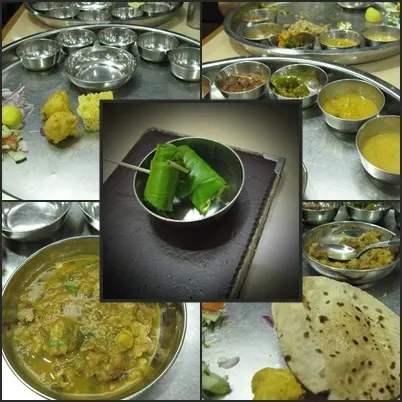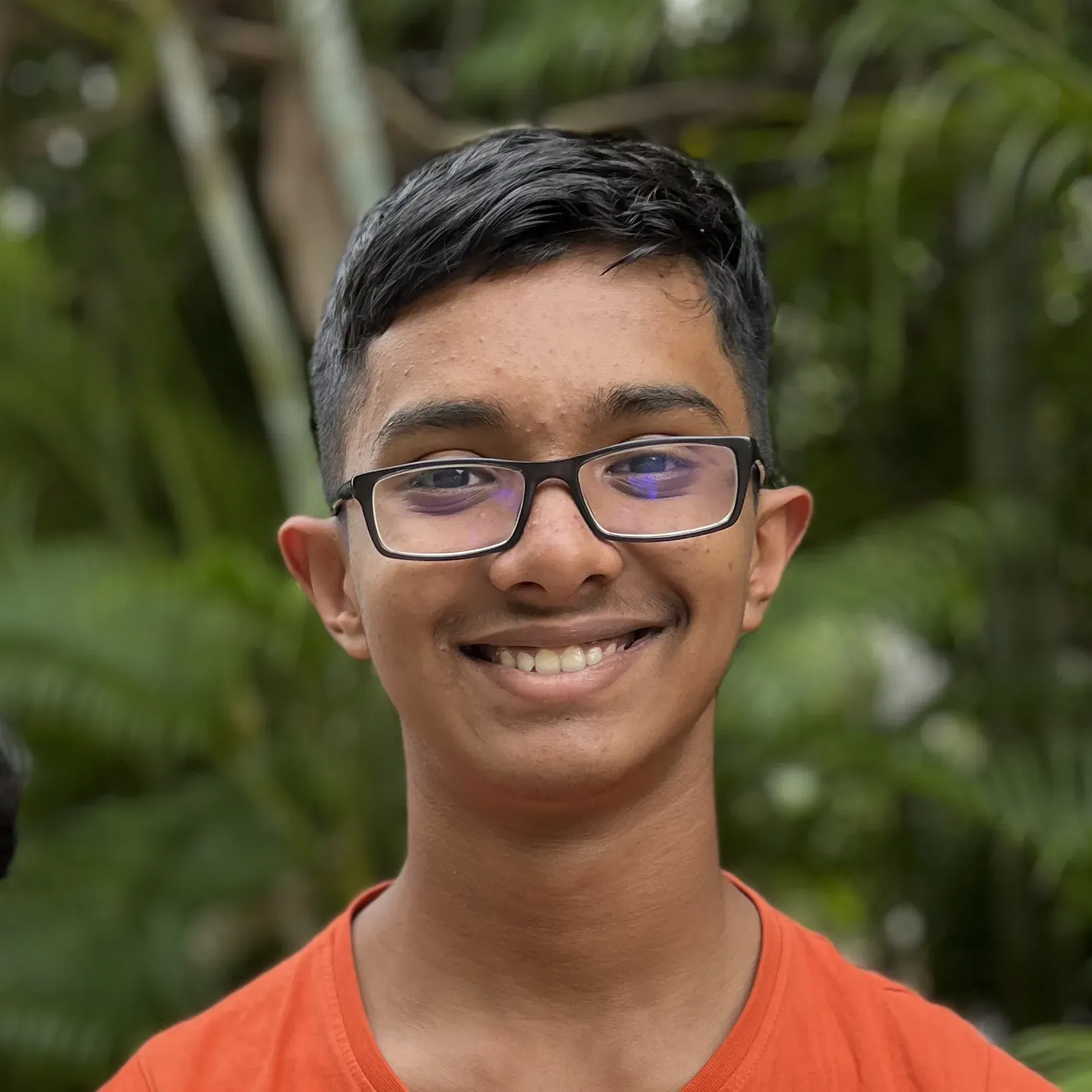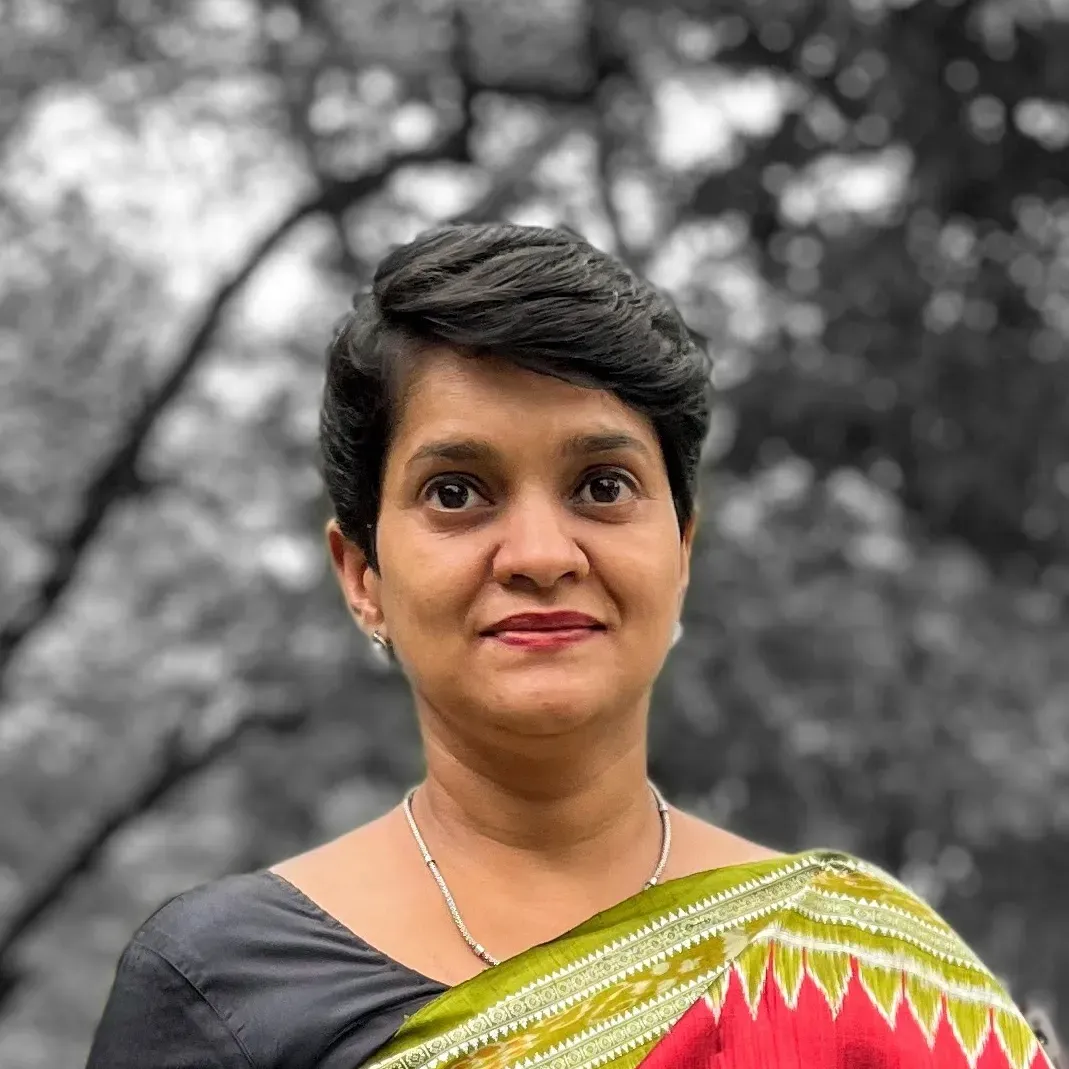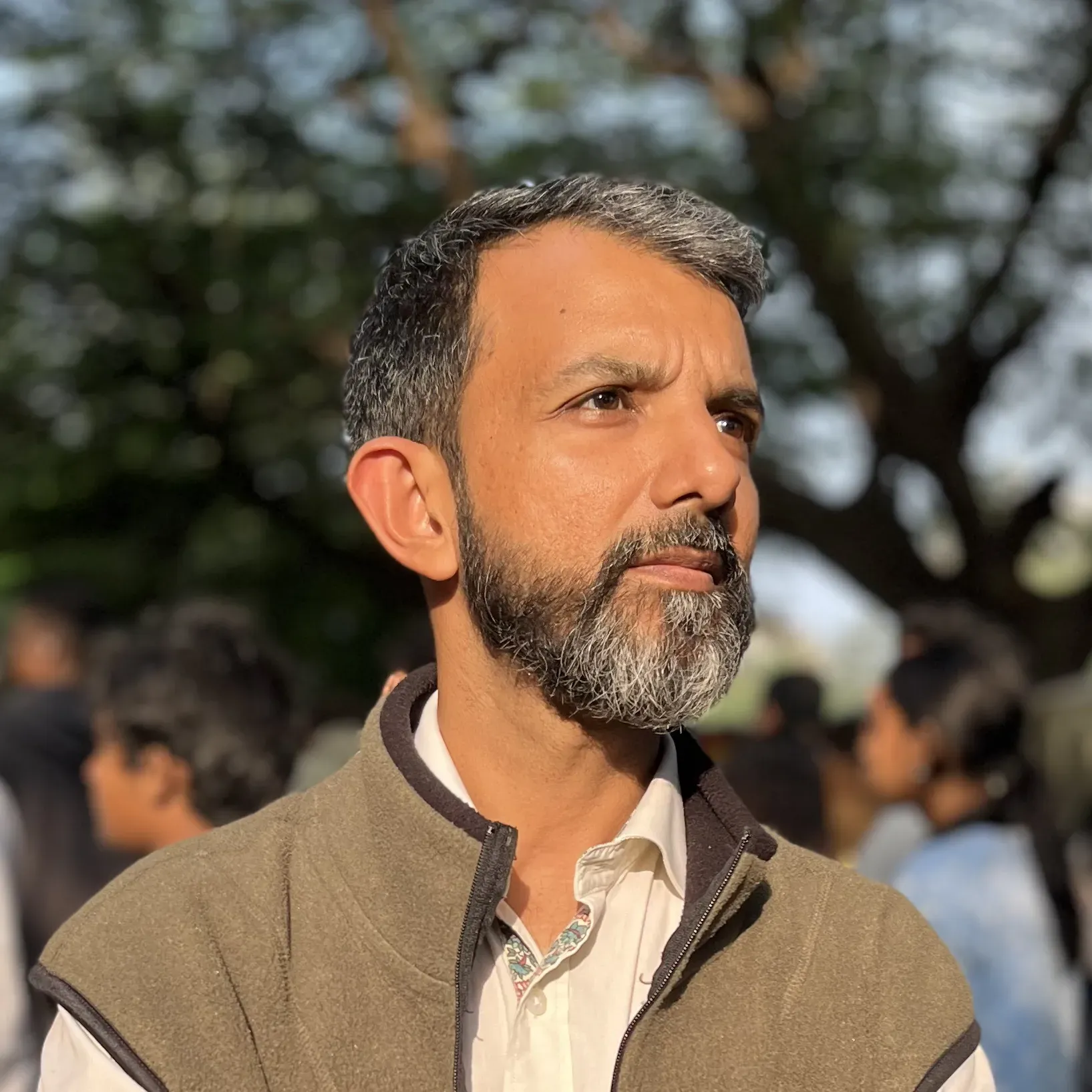Jodhpur

On the 31st at midnight, we boarded the train to Jodhpur from Jaipur after a long, tiring day. The train was delayed as it had arrived from Delhi. On the train, we met Subhajit, who was also in Rajasthan for a week-long break, much like us, from Bangalore. Their itinerary was slightly different from ours as they were heading to Jaisalmer. In the early hours of November 1st, we reached the Jodhpur platform, and we were relieved to find that our hotel had provided a cab for pickup. Otherwise, negotiating with cab and auto drivers in a new town when you’re half asleep can be quite challenging.
We arrived at our hotel Kuchamann Haveli and tried to get as much sleep as possible. Eventually, we managed to pull ourselves out of bed at 7:30 AM for breakfast. At 8:20 AM, we set out for a day trip to the Bishnoi village. Aarush was still fast asleep when we reached the Jeep.
Our driver and guide provided us with a brief overview of the Bishnoi community (bish: twenty, noi: nine). He was dressed in traditional attire and picked us up in an old Willy Jeep. Despite being Hindus, the Bishnoi community buries their dead to give the body back to nature and save wood for cremation. They are known for their eco-friendliness, and the famous Khejarli Massacre (where 363 Bishnoi people sacrificed their lives to protect trees) is a testament to their commitment to preserving nature. The idea behind this tour is to escape the modernity and rush of the city and take you to “off the beaten path” - small villages where the locals live.

On the way from Jodhpur to Guda village, we spotted some wildlife, including spotted deer, blue bulls, and antelopes. The Bishnoi people, being close to nature, do not harm these animals. The famous case of Salman Khan shooting a deer happened in this area. Unfortunately, our guide was driving a bit too fast and failed to maneuver, causing our Jeep to topple sideways. Fortunately, no one was injured, and about 6-7 people came to lift the Jeep out of the trench. Aarush was a bit shocked and still remembers this incident vividly.
Our reception in the Bishnoi village was warm and friendly, starting with a visit to a traditional opium ceremony. Although opium is illegal in India, locals have special rights to continue their traditional practices. A unique aspect was the penniless women flaunting heavy silver jewelry. Another noteworthy detail was that women, symbolizing creation, wear vibrant colors such as red and orange, while men wear white as a symbol of cleanliness and austerity.
We then encountered many shepherds on the way to Singhasni (a Muslim Potter’s village). We were taught how to spin the wheel, shape clay, and set the pots out to dry. The village looked like a battlefield with drying pots resembling piles of cannonballs. Santanu tried his hand at pottery, but it turned out to be more challenging than it seemed. When they take you on such trips, they usually expect you to purchase their products.
To complete our trip, we stopped at Salawas (Weavers village) for lunch. Before lunch, we were shown how durries (mats) were woven. The person explaining knew the business inside out. After the traditional lunch, we purchased a mat (durry), even though it was a bit expensive. It’s a place where life continues as it did in the past. The sun was quite hot, and we returned to the hotel around 3 PM.

Aarush was feeling sleepy but managed to stay awake. However, as soon as we boarded an auto, he fell asleep. We went to C-Road, Sardarpura, a lively part of Jodhpur with many shops and eateries. Our main purpose for going out was to dine at Gypsy. As we reached quite early, Aarush was sleeping all along, so we roamed around and did a bit of shopping before entering Gypsy, a clean and superb place for a pure vegetarian Rajasthani thali. There was one condition: food taken on the plate couldn’t be wasted. They served food multiple times and kept offering more servings, which we thoroughly enjoyed. If you’re a true food enthusiast, don’t miss this place; it only costs 150 INR per plate.
About the Author



